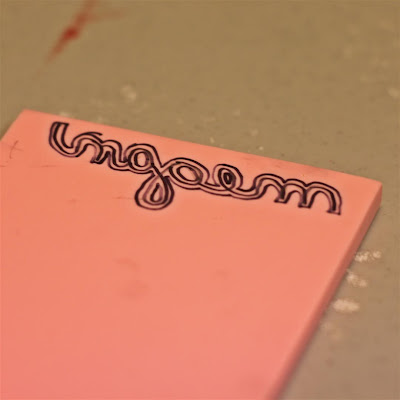You will need:
Lots of yarn
Two 13 X 13 inch squares of fabric
How to make:
1. Make several long yarn braids. I used nine strands of yarn to make my braids and each braid is about a yard long. I started with ten braids, which did not get me very far. Then I made five more braids, still not enough. Then I made three more.
To braid the yarn I used an "old school" friendship bracelet technique. Tie all nine strands together at one end. Use a safety pin to pin the knot to your sock. Then let your foot "hold" the yarn while you braid.
2. Begin sewing the yarn braids to one of the fabric squares. I set my sewing machine to its longest stitch. I left a half inch of fabric around the perimeter of the fabric. I suggest you leave a little more fabric around the edge as I had a heck of a time sewing the whole thing together into a pillow.
To hold the braids in place while sewing, use straight pins to pin the braids to the fabric. I held the braids in place with my hand while I sewed.
To make a corner sew to the end of an edge and leave your sewing machine needle down holding the fabric and yarn in place. Raise your presser foot and turn the fabric and the yarn. Lower the presser foot and start sewing in the opposite direction.
3. Sew the two fabric squares together with right sides facing. Leave a three inch opening. Then turn the fabric right side out, stuff, and hand stitch the pillow opening closed.
I generally prefer to make pillow covers rather than stuffing pillows. However, when I do stuff pillows I use
cluster stuff stuffing
. I think it makes a smoother pillow than other stuffings.
Note: Before you sew the pillow together, you could hand stitch your knots to the pillow front so that they are secure and don't flop around. I left mine floppy as you can see in the pictures below.
Do you ever have a project that you love to hate? This pillow would be it for me. It all started with an idea that I thought would be pretty simple to execute, but ended up taking way more time than I planned. So I don't think I will be tackling this project again, but here are some variations on this idea that I had while sewing:
- Use different colors of yarn in the braids
- Use solid color braids, but make braids in different colors to sew on the pillows
- Sew the braids onto the pillows in a circle pattern rather than a square


























































